Here you may view our current press releases. We always appreciate getting a copy of your publication for our records.
Press distribution list
Receive our latest news regularly by email. Register now.
Here you may view our current press releases. We always appreciate getting a copy of your publication for our records.
Receive our latest news regularly by email. Register now.

The Common European Agricultural Data Space (CEADS), an initiative to create a common European agricultural data space, was launched on April 1, 2025. The 36 project partners from 15 countries came together for a three-day kick-off event in Ghent (Belgium) at the beginning of May. The project, which is funded by the European Commission through the “Digital Europe” program, is coordinated by the Flanders Research Institute for Agriculture, Fisheries and Food (ILVO). Over the next three years, the partners will work on enabling the secure, sovereign and trustworthy use of data across the entire agricultural and food value chain, including public administration. With the start of the project, the Fraunhofer Institute for Experimental Software Engineering IESE is also taking on a central role as a technology partner.
more info
The digitalization of the manufacturing industry is progressing. Secure and efficient data rooms play a central role in this. The Fraunhofer Institute for Experimental Software Engineering IESE is presenting a turnkey solution at Hannover Messe 2025: With the AAS Dataspace for Everybody, companies can realize Digital Twins, CO2 calculations and Digital Product Passports. From March 31 to April 4, 2025, visitors to the joint stand of the Fraunhofer-Gesellschaft (Hall 2, Stand B24) will learn how companies can develop digital twins and share them in the data room. Following successful evaluation in the prototype environment, it is now also possible to migrate seamlessly to a productive environment with a service level agreement. There, the data room is guaranteed to be highly available.
more info
BizzTech, a global leader in AI-driven metaverse solutions for Smart Spaces, and Fraunhofer IESE, one of the leading research institutions in the field of software and systems engineering including a specialization on Industry 4.0 and Digital Twins, have announced a strategic partnership to accelerate Ukraine’s digital reconstruction. This collaboration integrates AI-driven digital twins, metaverse technology, and Industry 4.0 standards to build a scalable and transparent digital infrastructure that fuels Ukraine’s economic and industrial growth.
more info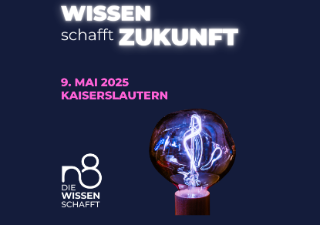
After a long break, the “Night that creates knowledge” will take place again on Friday, 9 May 2025, organized by the Science and Innovation Alliance Kaiserslautern e.V. (SIAK), the City Management Kaiserslautern and the event partners listed below. This event opens the doors of universities, research institutes such as Fraunhofer IESE and other innovative institutions in Kaiserslautern and provides exciting access to the world of science and innovation.
more info
Improving healthcare, relieving the burden on medical professionals and advancing research in Germany: These are the goals of the three-year research project “FHIR-Starter” starting in February 2025. The project focuses on the development of a software service that is able to automatically structure medical data using large language models (LLMs). To this end, the Fraunhofer Institute for Experimental Software Engineering IESE is cooperating with Prof. Sylvia Thun's working group at the Berlin Institute for Health Research at Charité and the AI company Insiders Technologies from Kaiserslautern. Fraunhofer IESE is the consortium leader. The project is being funded by the Federal Ministry for Economic Affairs and Energy as part of the “Generative AI for SMEs” innovation competition with 1.64 million euros. Translated with DeepL.com (free version)
more info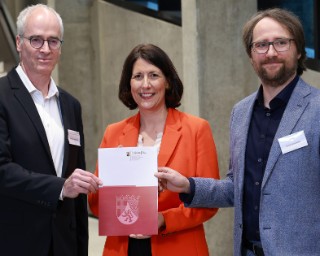
Kaiserslautern/Landau, 12.02.2025 - Artificial intelligence can unlock optimization potential in production - for example in production planning, quality control or in terms of resource efficiency. Nevertheless, small and medium-sized enterprises (SMEs) in particular are reluctant to introduce it. The Chair of Production Engineering and Industrial Organization (FBK) at RPTU, together with the Fraunhofer Institutes for Experimental Software Engineering IESE and Industrial Mathematics ITWM and the German Research Center for Artificial Intelligence (DFKI), wants to change this: The researchers are now looking for manufacturing SMEs for an AI potential analysis including the implementation of selected use cases.
more info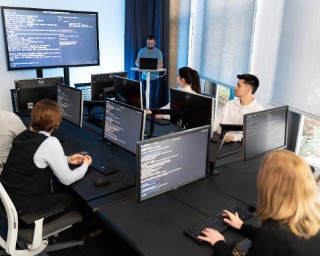
With the ongoing migration to the cloud, the need for corresponding security solutions is also increasing. Fraunhofer IESE has stood for IT security and data sovereignty for digital ecosystems for over 20 years. In cooperation with Worms University of Applied Sciences, the “Secure Cloud Computing” learning lab has now been launched, which not only offers comprehensive know-how for cloud DevOps, cloud users and middle management of cloud solution providers. It is also characterized by a unique combination of learning opportunities, cloud infrastructure, defense and attack labs.
more info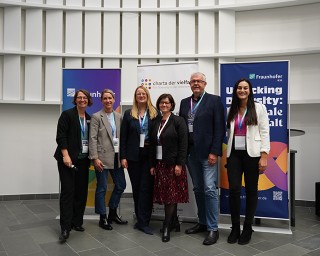
The region's first Diversity Summit took place at Fraunhofer IESE on November 25, 2024. Under the motto “Unlocking Diversity: Harnessing the potential of diversity”, around 70 participants met in the late afternoon for an intensive exchange of ideas. Andrea Bergsträßer, Director of Nursing at Westpfalz-Kinikum GmbH, Prof. Dieter Rombach, the founding father of Fraunhofer IESE, Esther Richter, Diversity, Equity and Inclusion Officer at BASF SE and Saskia Bugera, Commercial Director of 1. FC Kaiserslautern, discussed how diversity can be lived and how it can make companies and organizations more successful. Inclusion athlete Abdul Dogan also shared his experiences as a wheelchair user with the participants. The highlight of the event was the signing of the Diversity Charter, whereby companies and organizations reaffirmed their commitment to a diverse and inclusive corporate culture.
more info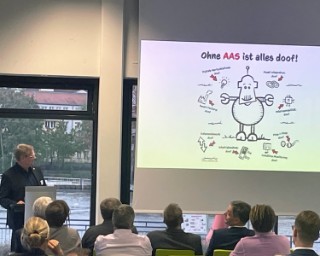
Yesterday, the official opening of Fraunhofer IESE's BaSys Roadshow took place on the HTW campus in Berlin, followed by a Kick-Off Event. More than 50 representatives from business, science and politics had the opportunity to experience the Eclipse BaSyx middleware in practical use in various Industry 4.0 use cases. Among others, HTW Berlin and the companies Schneider Electric and EAW presented how they use the potential of BaSyx. At the subsequent Kick-off Event, participants were able to engage in intensive discussions with users and the Industry 4.0 experts from Fraunhofer IESE at the roadshow exhibition.
more info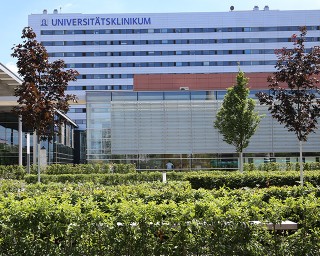
Since April 2024, the Fraunhofer Institute for Experimental Software Engineering IESE has been working together with the University Center for Digital Healthcare (part of University Medicine Frankfurt) on a concept for an IT system that supports the transfer of patients from the intensive care unit to the normal ward. The aim of the project “One Viewpoint for Medical Information in Clinical Contexts” (OneViewMed for short) is to facilitate the work of medical staff with the help of a graphical dashboard and to create interoperability between the IT systems used on different wards. OneViewMed runs until November 2024 and is funded by the Hessian Ministry of Science and Research, Art and Culture (HMWK) as part of the “Digital University Hospital Frankfurt” digitalization project. The first cornerstones of OneViewMed were defined in a joint requirements workshop at the end of May.
more info